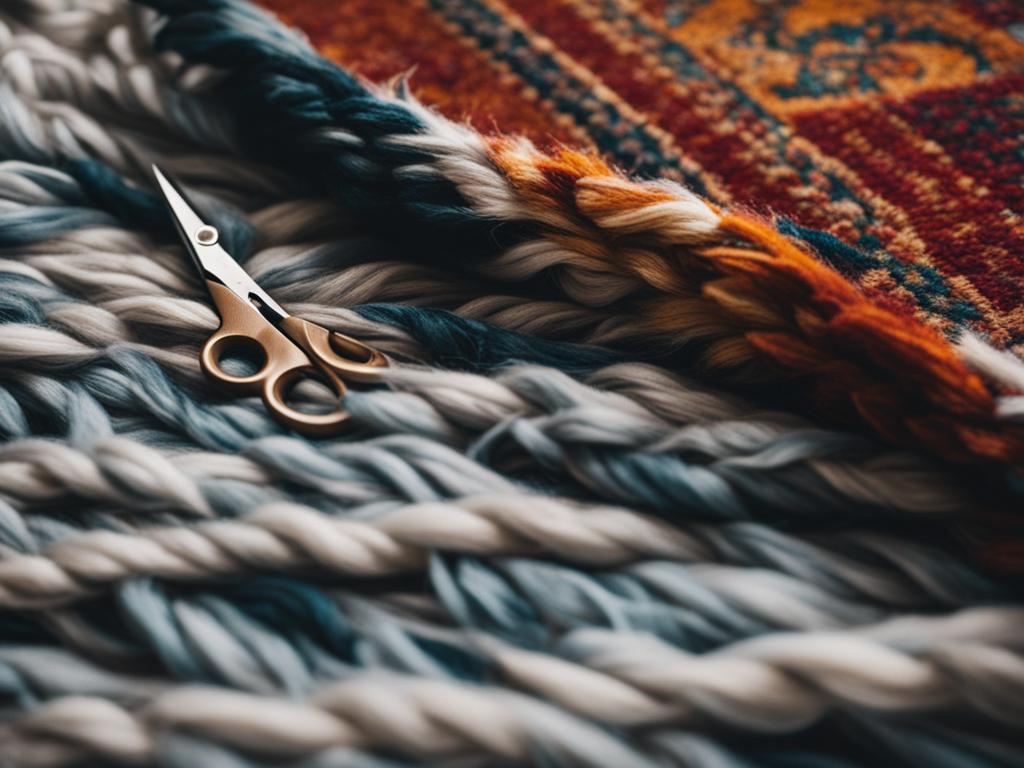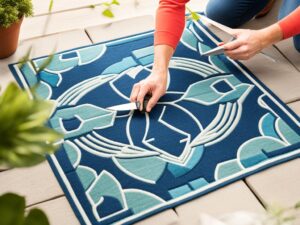Carpet fraying is a common issue that many households face. The constant movement of bulky furniture, foot traffic, and improper installation can all contribute to the fraying of rug edges. However, there are effective methods to prevent and repair fraying that can help prolong the lifespan of your rug.
One of the simplest ways to prevent fraying is by using binding tape. By securely taping down the edges of your rug, you can eliminate any movement that may cause fraying. This method is particularly useful for wall-to-wall carpets and can also be used with carpet grippers for smaller rugs and mats.
To protect your rug edges from the wear and tear caused by furniture, consider using furniture sliders. These sliders act like coasters and allow you to easily move heavy or bulky furniture without damaging the rug or causing fraying.
In some cases, cutting frayed edges and using carpet bindings can be a quick and effective solution. By carefully trimming the frayed edges and using a hot glue gun to apply carpet bindings, you can repair and prevent further fraying while enhancing the overall appearance of your carpet.
Transition strips can also be an excellent option for protecting rug edges. These strips create a smooth transition between different flooring surfaces while securing the edges of the rug. Additionally, heat machines can be used to carefully melt the frayed edges, creating a neat and durable finish without altering the rug’s original look.
Key Takeaways:
- Use binding tape to securely hold down rug edges and prevent fraying.
- Consider using furniture sliders to protect rug edges when moving heavy furniture.
- If your rug already has frayed edges, carefully trim them and use carpet bindings for repair.
- Transition strips can provide a stylish and practical solution to secure rug edges.
- Heat machines can be used to melt frayed edges and create a neat finish.
Using Binding Tape to Prevent Fraying
One effective method to prevent fraying of rug edges is by using binding tape. This highly adhesive solution securely holds the carpets in place, eliminating any movement that could lead to fraying. Binding tape is particularly useful for wall-to-wall carpets and can also be used with carpet grippers for bathroom and accent rugs.
When applying binding tape, make sure to clean the rug edges and the floor surface to ensure maximum adhesion. Simply lay the tape along the edges of the carpet, pressing firmly to create a strong bond. It’s best to use a wide and durable binding tape that can withstand daily wear and tear.
One of the advantages of using binding tape is its semi-permanent nature. Unlike other methods that require permanent alterations, binding tape can be easily removed without leaving any adhesive residue. This makes it a flexible and convenient solution for rug edge protection.
Moreover, binding tape can provide a clean and finished look to the edges of your rugs. It not only prevents fraying but also enhances the overall aesthetics of your carpet, giving it a professional and polished appearance.
So, whether you have wall-to-wall carpets or smaller accent rugs, consider using binding tape as an effective measure to prevent carpet fraying and protect your rug edges.
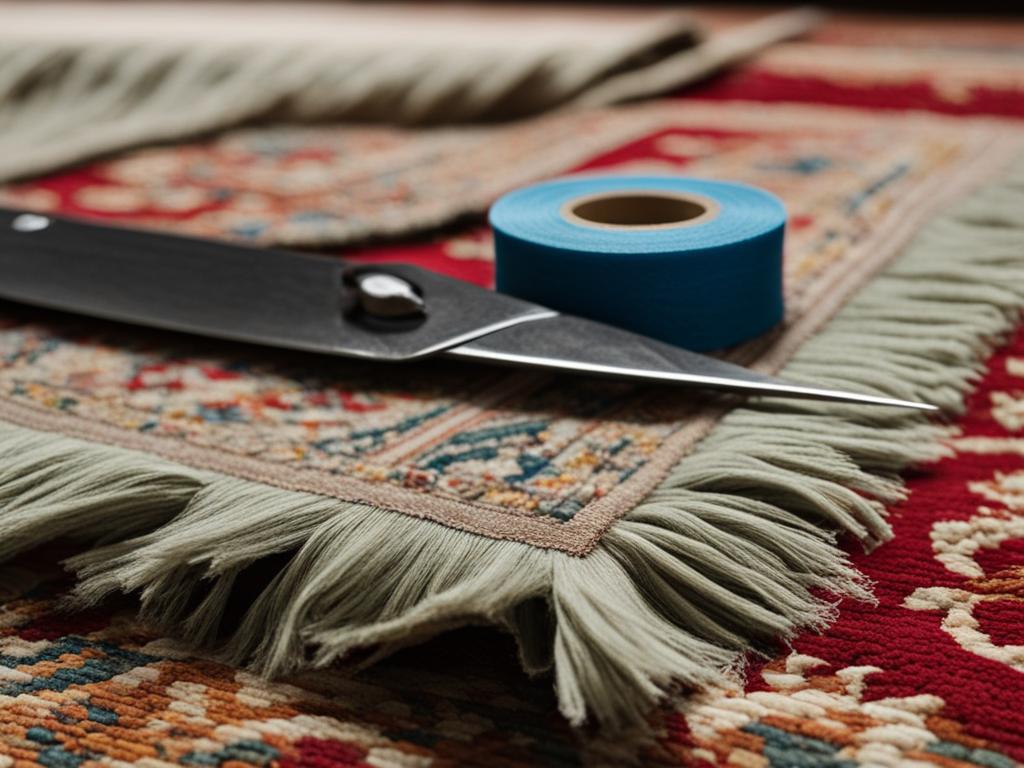
Pros and Cons of Using Binding Tape for Rug Edge Protection
| Pros | Cons |
|---|---|
| Effectively prevents fraying | Requires regular reapplication for long-lasting protection |
| Secures rug edges to the floor, minimizing movement | May not be suitable for all types of rugs |
| Easy to apply and remove | May not provide as seamless of an edge finish as other methods |
| No adhesive residue when removed | May not be as durable as permanent rug edge protection methods |
By carefully considering the pros and cons listed above, you can determine if using binding tape is the right choice for protecting the edges of your rugs.
Moving Furniture with Sliders to Protect Rug Edges
Moving furniture can be a significant cause of rug edge fraying. The constant friction and weight can damage the delicate fibers and lead to unsightly frayed ends. To prevent this, using furniture sliders is a smart and practical solution.
Rug edge protection is essential to ensure the longevity and beauty of your carpets. Sliders act like coasters, reducing the contact between the furniture and the rug, and allowing for smooth movement without causing any damage. Whether you’re rearranging your living room or installing new furniture, sliders can effectively prevent fraying and maintain the pristine appearance of your rugs.
By using sliders, you can easily move heavy or bulky furniture without worrying about rug damage or fraying. The smooth surface of the sliders minimizes friction, eliminating the risk of rug fibers catching or tearing. It provides the necessary cushioning and protection to prevent wear and tear on the rug edges.
How to Use Furniture Sliders
Using furniture sliders is incredibly simple, and they can be easily found in hardware stores or online. Here’s how to use them effectively:
- Start by checking the weight capacity of the sliders to ensure they can support your furniture.
- Carefully lift one corner of the furniture and place a slider underneath.
- Repeat the process for each corner until all furniture legs have sliders.
- Once the sliders are in place, gently push or pull the furniture to move it smoothly across the rug or floor.
- Remember to remove the sliders after you have moved the furniture to its desired location.
Using sliders not only protects your rug edges from fraying but also prevents damage to the flooring underneath. They are particularly effective on carpets and rugs, offering a hassle-free solution for easy furniture repositioning.
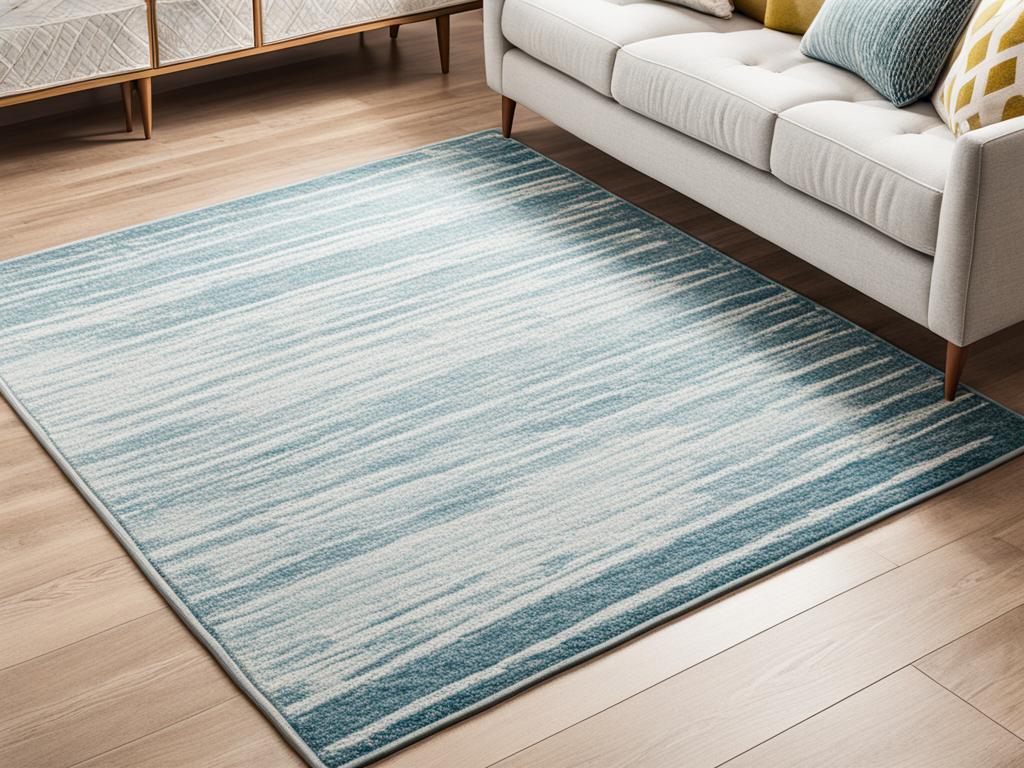
With the help of furniture sliders, you can confidently redecorate your space or rearrange furniture without worrying about damaging your rugs. These small but mighty tools provide an effective and simple solution to safeguard your rug edges and maintain their pristine condition.
| Advantages of Using Furniture Sliders |
|---|
| Prevents rug fraying and damage |
| Allows for smooth movement of heavy furniture |
| Protects the flooring underneath |
| Easy to use and remove |
| Available in various sizes and shapes |
Cutting Frayed Edges and Using Carpet Bindings
In some cases, cutting frayed edges can be a quick and effective solution to prevent further damage and fraying. However, it is important to exercise caution and use a sharp utility knife or scissors to ensure precise cutting.
Additionally, carpet bindings can be used to repair and prevent fraying. By using a hot glue gun and other necessary materials, you can create a durable binding that not only prevents fraying but also enhances the overall appearance of your carpet.
If you notice any frayed edges on your rug, it’s crucial to act quickly to prevent the damage from spreading. Here’s a step-by-step guide on how to cut frayed edges and apply carpet bindings:
Step 1: Assess the Damage
Examine the frayed edges of your rug to determine the extent of the damage. Make sure to identify any loose threads or loops that need to be trimmed.
Step 2: Prepare the Tools
Gather the necessary tools for the repair, including a sharp utility knife or scissors and a hot glue gun with adhesive sticks. Ensure that the knife or scissors are clean and sharp to achieve clean, precise cuts.
Step 3: Trim the Frayed Edges
Using the utility knife or scissors, carefully trim the frayed edges of the rug. Make straight cuts along the frayed area, removing any loose threads or loops. Be mindful not to cut into the main body of the rug.
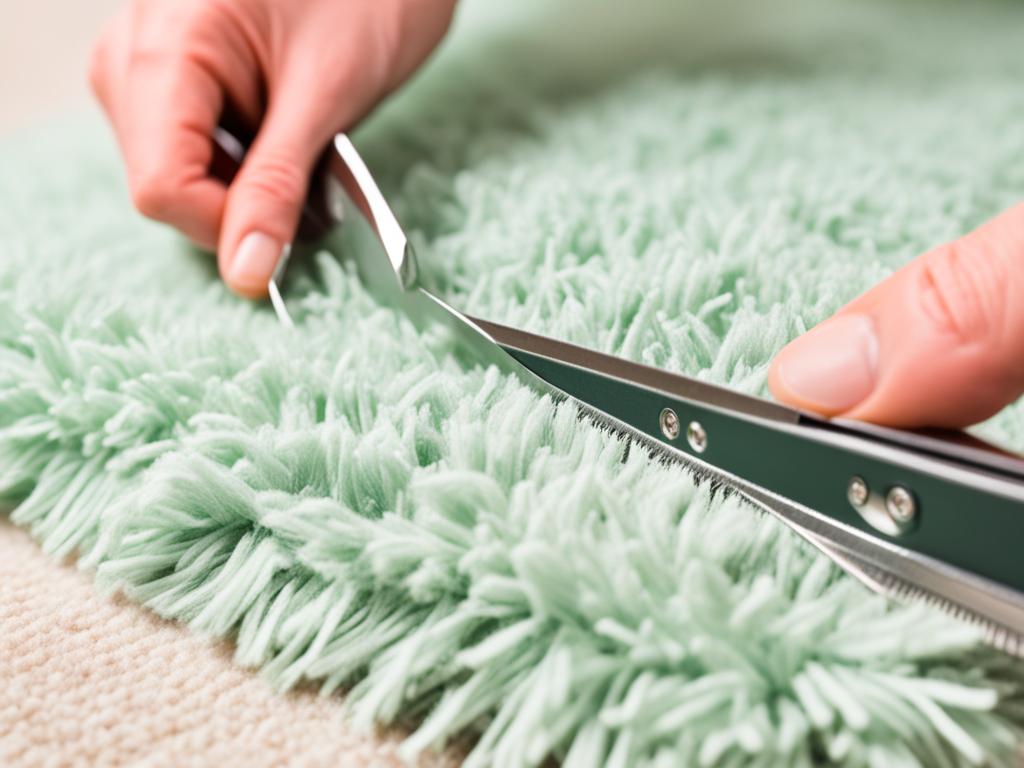
Step 4: Apply Carpet Bindings
Once you have trimmed the frayed edges, it’s time to apply carpet bindings to reinforce the edges and prevent further fraying. Start by heating up the hot glue gun and inserting an adhesive stick.
Apply a thin, continuous line of hot glue along the trimmed edge of the rug. Quickly press the carpet binding onto the glue, ensuring it covers the trimmed area completely. Hold the binding in place until the glue sets and dries.
Step 5: Trim Excess Binding
Once the glue has dried, trim any excess binding using the utility knife or scissors. Be careful not to cut into the rug fibers or the newly applied binding.
By following these steps, you can effectively cut frayed edges and apply carpet bindings to repair your rug and prevent further fraying. Remember to handle sharp tools with caution and take your time to achieve neat and precise cuts. With proper care and maintenance, your rug will maintain its beauty and longevity for years to come.
Using Transition Strips and Heat Machines to Protect Rug Edges
If you want to prevent rug fraying and secure the edges of your valuable rugs, transition strips and heat machines can be your go-to solutions. Transition strips not only add a stylish touch to your flooring but also provide a practical way to protect rug edges. Metal transition strips create a seamless transition between different flooring surfaces while effectively securing the edges of your rug. Meanwhile, PVC transition strips offer a cost-effective alternative that can be easily molded and curved for effortless installation, ensuring your rug stays in place and fraying is prevented.
Heat machines, such as blow torches, offer another effective method to protect rug edges from fraying. With careful precision, you can use a heat machine to melt the frayed edges, creating a clean and durable finish without compromising the original look of the rug. This method is particularly useful when dealing with delicate or intricate rugs where cutting or other techniques may not be suitable. By opting for heat machines, you can ensure the long-lasting beauty and functionality of your rugs while preventing further fraying.
No matter which method you choose, whether it’s using transition strips or heat machines, it’s important to prioritize the protection of your rugs. By taking proactive measures, you can prevent rug fraying, stop rug edges from fraying, and provide the necessary rug edge protection. Remember these rug anti-fray tips, and enjoy your rugs for years to come, knowing they are well-cared for and protected.
